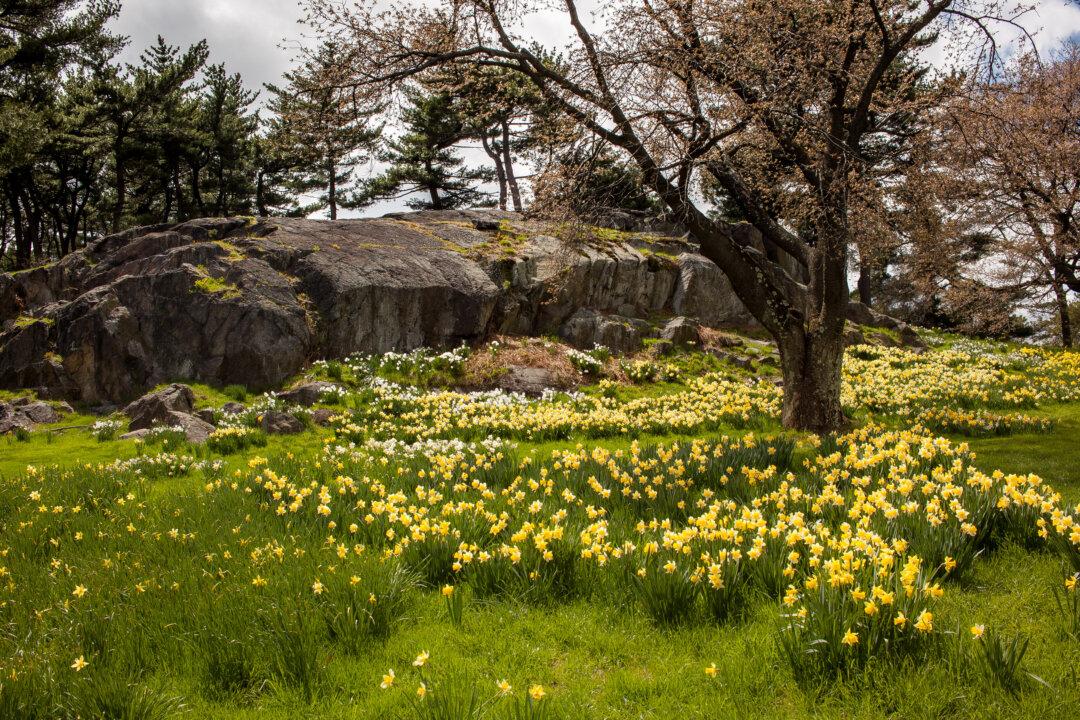NEW YORK— It just so happened that Nathaniel Lord Britton, a taxonomist, visited the Royal Botanic Gardens in London during his honeymoon in 1888, and thought New York should have one too. So he founded the New York Botanical Garden in the Bronx, where the 250-acre space is now ensconced between blocks of fast food restaurants and tenement housing.
In some ways, the 124-year-old garden is like a Narnia’s closet that can whisk one away from the urban daily grind. Upon stepping past the gates, one leaves behind a city of rats and angry drivers, and enters New York’s alternate universe: bucolic lawns, and century-old magnolia trees that spread across the pathway, like a pink and white ambrosial blanket.
It’s been a compressed spring, which means that all the spring flowers, for the most part, will blossom at once, creating a lovely medley of blooms that one wouldn’t ordinarily see: daffodils together with snowdrops and tulips.
On the peak of Daffodil Hill, there are glorious rocks that make one feel as if one is standing in a mountain vista rather than a garden.
Some of the heirloom daffodils’ bulbs have remained there since the early 1900’s; today, the area is a focal point where nature’s past meets its future, a place where nature, art, and science interdepend on one another.




